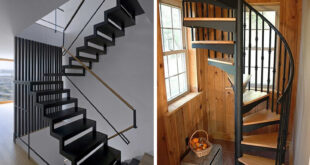
Mid-Century Modern: A Timeless Design Movement Shaping Contemporary Living
Mid-century modern design, a style that emerged in the aftermath of World War II, continues to captivate and influence contemporary living spaces. Characterized by clean lines, organic shapes, and a focus on functionality, this aesthetic movement represents a significant shift in architectural and interior design. Understanding the principles and history of mid-century modern is essential for appreciating its enduring appeal and applying its concepts to modern homes. This article delves into the key elements, historical context, and lasting impact of mid-century modern design.
The Origins of Mid-Century Modern
The mid-century modern movement flourished roughly from the mid-1940s to the mid-1960s. It was a period of significant social and technological change, marked by optimism, innovation, and a desire for simpler, more efficient living. Designers sought to break away from the ornate and heavy styles of the past, embracing a new aesthetic that reflected the modern age. The movement was influenced by various factors, including the Bauhaus school of design, which emphasized functionality and mass production, and the Scandinavian design tradition, known for its simplicity and use of natural materials.
Key Influences and Inspirations
- Bauhaus School: The Bauhaus’s emphasis on functional design and mass production significantly influenced the mid-century modern movement.
- Scandinavian Design: The Scandinavian focus on simplicity, natural materials, and craftsmanship resonated with the mid-century modern aesthetic.
- Post-War Optimism: The optimistic outlook following World War II fueled a desire for innovative and forward-thinking design.
Defining Characteristics of Mid-Century Modern Design
Several distinctive characteristics define the mid-century modern style. These elements contribute to its clean, functional, and aesthetically pleasing appeal:
- Clean Lines: Simplicity and minimalism are central to the mid-century modern aesthetic. Furniture and architectural elements feature clean, uncluttered lines.
- Organic Shapes: Curves and geometric forms are frequently incorporated, often inspired by nature.
- Functionality: Design prioritizes practicality and usability, with a focus on creating efficient and comfortable living spaces.
- Use of Materials: Natural materials like wood, particularly teak and walnut, are common, often combined with man-made materials like plastic, fiberglass, and metal.
- Minimal Ornamentation: Decoration is kept to a minimum, with an emphasis on the inherent beauty of the materials and forms.
- Integration with Nature: Large windows and open floor plans are used to connect indoor and outdoor spaces, bringing natural light and views into the home.
Iconic Mid-Century Modern Designers
Numerous influential designers shaped the mid-century modern movement. Their innovative creations and design philosophies continue to inspire contemporary designers and homeowners:
- Charles and Ray Eames: Known for their iconic chairs, like the Eames Lounge Chair and the Eames Molded Plastic Chair, they pioneered the use of molded plywood and plastic in furniture design.
- George Nelson: Famous for his clocks, sofas, and storage systems, Nelson emphasized functionality and playfulness in his designs.
- Eero Saarinen: Creator of the Tulip Chair and the Womb Chair, Saarinen explored organic forms and innovative materials.
- Isamu Noguchi: A sculptor and designer, Noguchi created the iconic Noguchi table, known for its biomorphic shape and elegant simplicity.
- Florence Knoll: Knoll transformed office design and created many furniture pieces now considered classics of the mid-century modern style.
Applying Mid-Century Modern to Your Home
Incorporating mid-century modern design into your home can create a stylish and functional living space. Here are some tips for achieving this aesthetic:
Furniture Selection
Choose furniture pieces with clean lines, tapered legs, and organic shapes. Look for items made from natural materials like wood or combined with materials like fiberglass or metal. Invest in iconic designs or reproductions to capture the essence of the style. A mid-century modern sofa often features clean lines and a low profile. [See also: Choosing the Right Sofa for Your Living Room]
Color Palette
The mid-century modern color palette typically includes a mix of earthy tones, such as browns, greens, and oranges, combined with pops of brighter colors like turquoise, yellow, and red. Use these colors in your furniture, textiles, and accessories to create a cohesive and visually appealing space. Consider an accent wall in a bold mid-century modern color.
Accessorizing
Keep accessories to a minimum, focusing on a few well-chosen pieces that complement the overall aesthetic. Consider adding geometric patterned rugs, abstract artwork, and vintage lighting fixtures. Plants can also add a touch of nature to your mid-century modern home. [See also: Incorporating Plants into Your Home Decor]
Lighting
Lighting plays a crucial role in mid-century modern design. Opt for pendant lights, floor lamps, and table lamps with clean lines and geometric shapes. Consider using vintage or reproduction fixtures to add authenticity to your space. A Sputnik chandelier can serve as a striking focal point.
Architectural Elements
If you’re renovating or building a home, consider incorporating architectural elements that reflect the mid-century modern style. These may include large windows, open floor plans, and flat roofs. Natural light is a key element of the design. [See also: Maximizing Natural Light in Your Home]
The Enduring Appeal of Mid-Century Modern
The mid-century modern style continues to resonate with contemporary homeowners and designers for several reasons. Its clean lines and functional design make it suitable for modern living spaces. Its emphasis on natural materials and connection to nature creates a sense of warmth and tranquility. And its timeless aesthetic ensures that it remains stylish and relevant for years to come. The lasting appeal of mid-century modern is a testament to its innovative design principles and its ability to adapt to evolving lifestyles.
Mid-century modern furniture is easily found at vintage stores and online retailers, making it accessible to a wide range of consumers. The style’s versatility allows it to blend seamlessly with other design aesthetics, creating unique and personalized living spaces. Whether you’re furnishing an entire home or simply adding a few key pieces, the mid-century modern style can elevate your living space and create a timeless and inviting atmosphere.
In conclusion, mid-century modern design is more than just a trend; it’s a timeless aesthetic that continues to shape the way we live and design our homes. Its emphasis on functionality, simplicity, and connection to nature makes it a perfect fit for modern lifestyles. By understanding its history, principles, and key elements, you can successfully incorporate this iconic style into your own home and enjoy its enduring appeal for years to come. Embracing mid-century modern design is a way to celebrate innovation, functionality, and timeless elegance.
 Nimila
Nimila




